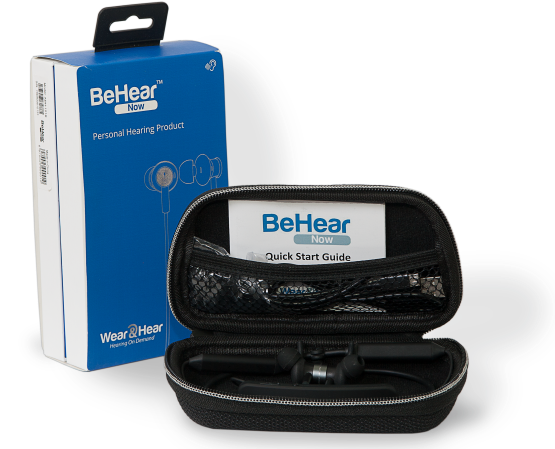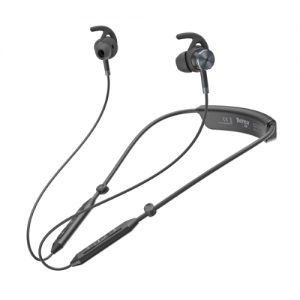BeHear NOW Technical Review by HLAA Member
July 12, 2019Technical Assessment of BeHear NOW Personal Hearing Product
♦ The following is a review submitted by Dave Robertson, active in the HLAA (Hearing Loss Association of America) Kentucky chapters
Packaging

Neat and well-organized, with good quality protective case. The Quick Install Guide was clear.
The Smartphone App
Software is attractive and very intuitive. It works with no bugs! Bluetooth connection was easy to make.
The Headset
The design is awkward. The control buttons are awkward to use while wearing. The solution to use cable clips to take up excess cable is very basic and not entirely satisfactory. For example, suspended ear-rings get easily trapped between the cable and the headset frame.
The Technology Used
This is definitely no ‘ordinary’ headset device. The ability for the user to make his/her own audiogram profile using the smartphone app gives the user the control that is much needed by hearing device users. Also the ability for the user to be able to program separate listening profiles to suit their needs. The surprising outcome of the assessment was to find that everything relating to what was left to the user to program (audiogram and profiles) actually worked well and to a higher quality than for the expensive RIC hearing aids the user was used to wearing. This demonstrated that good quality technology had been utilized in the design and manufacture, along with a lot of thought and research into the needs of the user. As mentioned earlier, the weakest part is the physical design of the headset.
Conclusion
The fact that the headset is similar in style to those used by portable music player listeners, the user does not feel the same stigma as many people who wear hearing aids do. Also, to experience a better control of setting up the device to suit a user’s specific requirements and to also to experience a higher quality of hearing, make this device very attractive to use over standard RIC hearing aids, especially when the price point is so low comparatively.
For the user to not have to worry about battery changes and for the manufacturer to be able to take advantage of the larger physical size of the equipment to provide good battery storage and more powerful electronic components to improve hearing quality, makes this device ‘stand out in the crowd’ compared to similar devices on the market.
Apart from having a rethink about cable management and control button ergonomics, I think as a future initiative it would be useful to have an automated facility where the device can identify the environment it is being used in and be able to auto switch onto the respective profile without user intervention. This could be an option given to the user in the smart app to choose manual or auto for the selection of profiles. The parameter to decide on switch over could be set by the user using a sliding button with the app. I would also like to see T-coil implemented.
The bottom line:
“The surprising outcome of the assessment was to find that everything relating to what was left to the user to program (audiogram and profiles) actually worked well and to a higher quality than for the expensive RIC hearing aids the user was used to wearing.”



